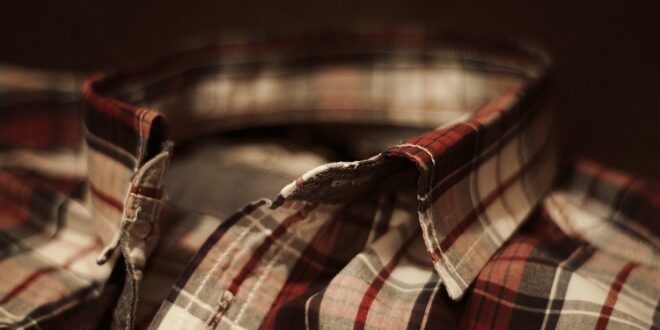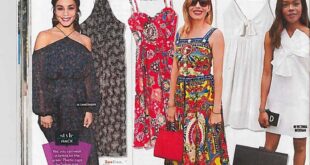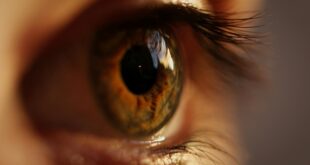The word “shirt” comes from the combination of Old English word “scyrte”, the Middle High German word “hem (e) de”, the Old High German “hemidi” and actually means “veils, covers”. The shirt is usually understood to be outerwear worn by men, made of light fabric, with sleeves and a collar and buttoned throughout. The button placket was created by the desire not to have to pull the shirt over the head. In men’s clothing, buttons are left to right, in contrast to women’s clothing.
The shirt was invented to cover the upper body. Already some time before There were white linen shirts. It was sometimes used as an undergarment, sometimes as an upper garment, for both women and men. In the 16th century the shirts got the look and features as we know it today.
Traditional Shirt Styles
- Toga over tunic (ancient)
- Cotte (Middle Ages)
- Choli (India)
- Kimono (japan)
- Galbija (Egypt)
Today the term “shirt” is used exclusively in outerwear (women’s and men’s clothing) and in the underwear department (undershirts or night shirts). There is a men’s shirt and a blouse or a shirt blouse for women.
In addition to the standard and casual shirts, there are other shirt shapes for specific occasions. For instance, Clergy shirts for men and Tuxedo shirts are equipped with a stand-up collar with kinked tips, the so-called “patricide” or with a normal Kent collar (see explanation below). Also the polo shirt is one of the shirt shapes. For the first time it came from sport, now it is a popular and fashionable leisure wear. Other well-known forms are the flannel or lumberjack shirt, the Hawaiian shirt, fisherman shirt and the denim shirt (in women’s and men’s clothing) represents its own fashion trend.
Collar shapes of shirts
Parricide
The patricide, wing collar or tuxedo collar is worn on festive occasions with a bow or bow tie.
Tuxedo collar
Tuxedo collar is only worn with a tuxedo on very festive occasions.
Kent collar
The fold-down or fold-down collar is the collar that is worn most often. It is only moderately spread for a narrow tie knot. Suitable for all occasions.
Wide collar
The wide collar is a combination of the Kent collar and the cutaway collar. Can be worn with a wider tie knot. For formal occasions.
Cutaway collar
The cutaway collar or shark collar is a fashionably high collar with collar stiffeners and spread wide. For particularly large tie knots. For elegant occasions.
Button-down collar
The collar tips of the button-down collar are attached to the shirt by buttons (buttons) on the shirt. Suitable for the sporty look (casual shirt).
Hidden button collar
Is a variant of the button-down shirt? With the hidden button-down collar, the buttons on the side are below the tip of the collar and cannot be seen.
Stand-up collar
The stand-up collar is worn without a tie and is considered fashionable. Not suitable for formal occasions.
On shirts for business or formal occasions, the collar tips are often reinforced with removable collar bones. These are to be taken out before washing. The sticks are usually made of plastic or metal. In the case of very high-quality shirts, they can also be made of silver, horn, mother-of-pearl and wood.
Cuffs
The sports cuff is used most often. On some models, the width can be adjusted using two buttons. There is also the French cuff, which is closed with a separate cufflink, and the combination cuff, which is worn with both buttons and cufflinks. Last but not least, there is the rarely used Neapolitan cuff – a two-button cuff in which the buttons are partially covered by a second layer of fabric.
Materials of the shirts
The spread of shirts began with linen – when cotton became cheaper than linen, it prevailed. In the 20th century, shirts were also made from silk and synthetic fibers. Due to chemical processing, some shirts nowadays get the addition “easy-iron”, but this also includes increased sweating due to less breathable cotton. Here the fibers are chemically treated and smoothed, which often causes an uncomfortable feeling. Due to the chemical, somewhat stiffer fibers, these shirts are not quite as durable and tear more easily after a few washes.
Good shirts should be made of natural fibers such as 100% cotton, linen, wool etc. or a mixture of these materials. Most of the time, pure cotton is found in shirts. The best and most popular cotton is Egyptian or “Sea Island” cotton because it has the longest cotton fibers.
Fashion influences
For a long time, white men’s shirts were considered a luxury item or a status symbol – it showed that the gentleman did not “get dirty”, that is, he did not need to work physically. To protect the white sleeves when writing, sleeve guards that were pulled over the shirt sleeves were used in the past. It was not until the end of the 20th century that striped and colored shirts (mostly shades of blue) became fashionable. Narrower stripes are more intended for formal occasions, whereas wider stripes are intended for leisure activities. The height and length of the collar are influenced by fashion. Men’s fashion is also very versatile here.
Shirt sizes for ready-to-wear shirts
The size of the collar size is given in centimeters. Two sizes of collar sizes given together (e.g. 41/42) have the same upper body section. Some labels also indicate whether they are short or long-sleeved shirts – however, the exact length is not marked and differs depending on the manufacturer.
Correct ironing of a shirt
- Collar from the left, then the collar from the right
- Button placket from the left and breast pocket from the left
- Button placket from the left
- Yoke from the right first half, then the second half
- Cuff from the left, then from the right
- Sleeves with open cuffs, then sleeves with closed cuffs
- Iron the sleeves with the open cuffs, iron the sleeves with a break (“crease”), then iron the
- sleeves with the closed cuff,
- Side part with button placket
- Back part
- Side part with buttonhole placket
 HammBurg Be informed with latest news, reviews, entertainment, lifestyle tips, and much more.
HammBurg Be informed with latest news, reviews, entertainment, lifestyle tips, and much more.




